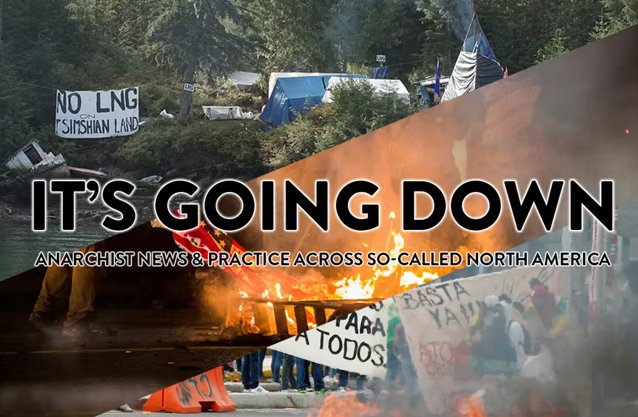Filed under: Anti-fascist, Capitalism, Critique, US, White Supremacy

Just as the city name of Ferguson has become shorthand for police murder, the city name of Charleston has become synonymous with white supremacist violence. As we all know, a young white man attended service at the African Methodist Episcopal church in Charleston, SC before unleashing a barrage of gunfire, killing 9 black people. As if further proof of their right-wing ideology was necessary, it was later discovered that the shooter had photos wearing patches of an apartheid-era South African flag, and other white supremacist imagery. This shooting has drawn a national outcry, but it is only a particularly visible manifestation of a war that continues daily.
White supremacy is the cornerstone of America, fundamental to the social order and the fuel of capitalism. The social order wages war against the populace, a war that manifests itself in countless ways. This war is only maintained through a careful process of concealment, by hiding it from the very people it wars against. So much of it has become familiar, inconspicuous, by how deeply embedded it is in our lives. The hostage situation of capitalism, work, rent, and the systematic imprisonment of black and brown bodies for use as laborers, etc. The shooting in Charleston has momentarily lifted the curtain on this massive operation and exposed it for what it truly is, even if some do not grasp its magnitude.
Let us back up a bit, briefly. About a month before the name Charleston was on anybody’s lips, Olympia police shot two young black men for attempting to shoplift beer. Very quickly, anti-police demonstrations flared up, but encountered something increasingly common: their enemies in the street were not only the police, but white supremacist vigilantes. Several nazi skinheads had arrived as a ‘counter-protest’ in support of the police. This culminated in a large brawl on the night of May 30th, when a group of nazis were attacked by a crowd of several hundred with baseball bats, bricks and even a fire extinguisher. Anti-fascist patrols continued in the next days to make sure they did not return.
Just as in Ferguson in the summer of 2014, later that year in the Bay Area, and more recently in Baltimore, anti-police demonstrations have encouraged others to take the streets in support of the police, to preserve the status quo. Stores were guarded by property owners or their employees, and in some cases, people attended demonstrations for the sole purpose of maintaining law and order. Sometimes their presence was deterrent enough, other times it led to fights breaking out in the street. For instance, people interfering with the looting of stores or the construction of make-shift barricades were fought off in the streets of Oakland and Berkeley. Fights broke out in Baltimore between bar-goers and demonstrators, while Orioles fans prepared themselves with baseball bats.
During these moments of rupture, when the veil disguising this war waged against us is lifted and people take action against it, it forces bystanders to choose sides. There are those who wish to preserve things continuing as they are—white supremacy untouched, capitalism functioning smoothly, even with superficial modifications—and those who want the destruction of these forces. Just one day after the shooting in Charleston, a man was seen riding the ferry in Seattle wearing a red armband with a swastika. Numerous rallies in support of the use of the Confederate flag have also taken place in the past few days. These are people choosing a side—the side of white supremacy.
On the other hand, not everyone has taken that side. Since the Charleston shooting, a number of vandalism attacks have taken on historic statues from the Confederacy in the South. Each morning, another story appears about a statue that has been defaced with the slogan “Black Lives Matter,” or otherwise indicated the racist history embodied by it. This has spread as far as Baltimore to Austin, by way of St. Louis, and of course, Charleston itself in just a matter of days. This goes to show how incredibly easy the tactic of graffiti is to reproduce.
However, the controversy around the Confederate flag and statues from that period only obscure the true problem at hand. We shouldn’t concern ourselves with superficial symbols of a past era of white supremacy, but with the mechanisms through which it functions today, and most importantly: sabotaging them. We must examine how power operates, not as an abstraction but as a material force, and find ways to destroy it, once and for all. During different upheavals across the United States and the world, people have found themselves standing on freeways, blocking trains and port terminals, looting what they need to survive, and setting fire to the infrastructure of their enemies.
There is not a population we need to convince, no masses that simply need to be educated, but sides that need to be taken. There is no dialog that needs to be had, or changed, but a complex system of social relations that take real, concrete forms and need to be smashed to bits. Only when we come to this conclusion can we begin to take on this project.





